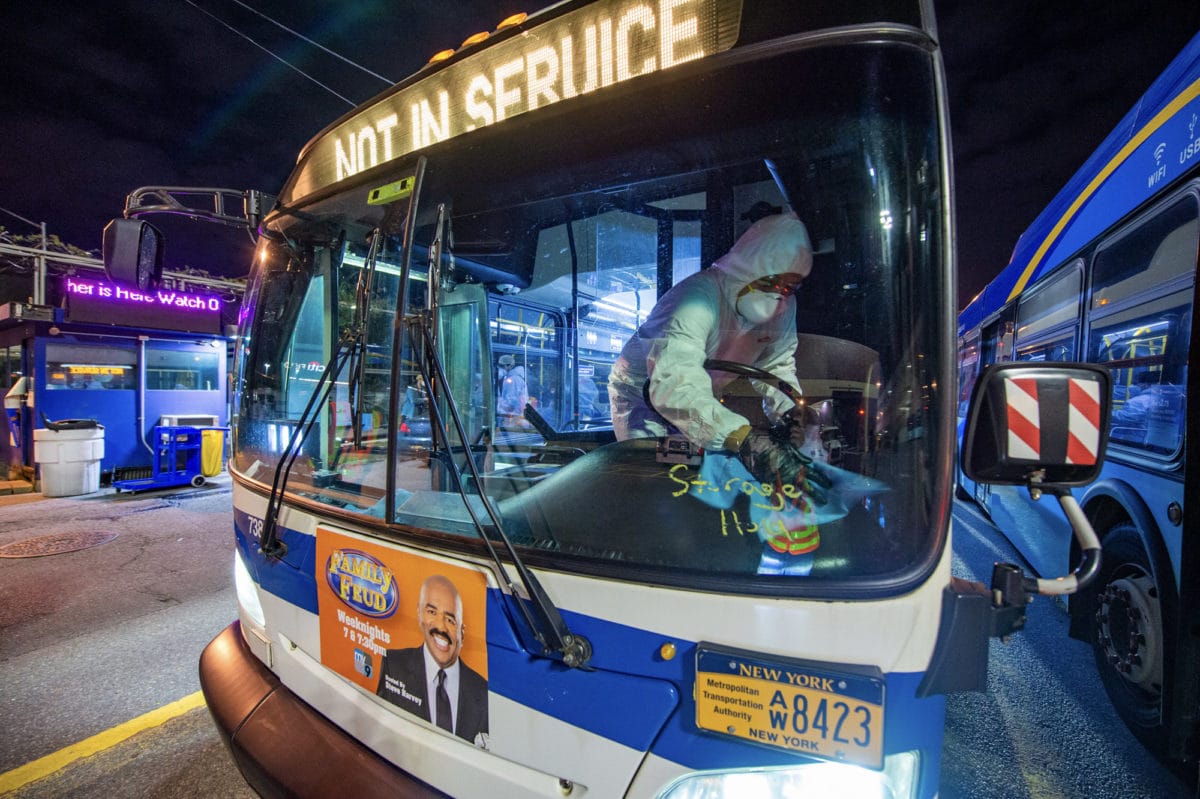Adams To MTA: Do Not Give Up On Brooklyn Bus Network Redesign


BROOKLYN – Draft of the Brooklyn Bus Network Redesign – a look at how well the current network serves, and where improvements could be made – was supposed to be released on June 30, but was put on hold last month because of COVID-19 related constraints. Brooklyn Borough President Eric Adams thinks the MTA should get creative about community engagement and soliciting feedback so the project can move ahead, especially at a time when buses are of critical importance, serving almost as many riders as the subway.
“I am concerned that the delayed project timeline will defer much-needed improvements to the Brooklyn bus network, which is often plagued by deficiencies and inefficiencies, ” Adams said in a letter sent to the MTA this morning. “In many parts of the borough, particularly its densely populated eastern neighborhoods, buses are the primary means of transport for elderly and low-income individuals.”
The Brooklyn Bus Network, comprised of 72 routes, carried over 650,000 riders on an average weekday. In general, bus boardings are more prevalent in the eastern half of the borough, particularly in the neighborhoods east of Prospect Park. Most Brooklyn bus customers transfer as part of their journey; 37% transfer to another bus and 35% transfer to the subway, we reported back in February. In MTA’s Existing Conditions Report, it stated:
How will Brooklyn benefit from the redesign?
- Brooklyn’s ongoing population (Brooklyn’s population has grown 5.2% since 2010) and employment growth are expected to continue, though some neighborhoods are expected to grow faster than others. While the Brooklyn Bus Network covers nearly the entire borough, it has not changed much in the past decades to support this growth.
- Currently, just 31 of the 170 subway stations in Brooklyn are accessible according to standards established by the Americans with Disabilities Act (ADA). The network redesign will be particularly important for those customers whose transit options are currently more limited.
- According to Census data, about 55% of Brooklyn households do not own a vehicle. About 62% of Brooklyn commuters travel via transit. About 53% of Brooklyn commuters identified rail modes as their primary means of transportation, while 9% identified bus as their primary means. About 23% of commuters drive to work.
“I am further concerned that the projected MTA budget shortfall will result in drastic cuts to existing bus service without meaningful public engagement,” Adams wrote to the MTA. “Transit advocates have called on the agency to adopt best practices for informing and involving riders moving forward. COVID-19 continues to present severe challenges for City operations, as decision-making is based on social distancing and safety directives. I believe that in this new era, we must re-imagine community participation and find unique ways to solicit information, despite limits on gatherings.”
Adams asked the MTA to present multiple proposals for any expected service changes, explaining that this was important for communities that have lost routes during the recent years, and in communities where utilization has reminded high during the pandemic.
“It is essential to ensure that new cuts do not exacerbate inequities for the borough’s low-income and transit-poor neighborhoods,” he said. “Just as the agency conducted listening sessions in different communities to better target its redesign, it should solicit feedback from all parts of the borough prior to altering and/or reducing bus service.”
MTA should meet its riders where they are, Adams suggested – straphangers should be able to scan a QR app using their phones along their regular routes to obtain updated information about potential changes that may affect their travel. The MTA should also use this technology to share plans and proposals, as well as solicit public input, he said, and provide easy to understand compare-and-contrast maps that explain how the routes change.
“In the last few months, buses have been a lifeline for riders — especially essential workers — and must be prioritized in future transit planning,” Adams said. “As the City and State confront the challenge of reopening New York’s economy, we need to seek innovative solutions rather than resort to business as usual. The MTA must do its part by reimagining how it works with bus customers from communication, to engagement, to implementation.”
Shams Tarek, a spokesperson at the MTA, told Bklyner, “Community engagement and public feedback are critical to the bus network redesign process, and not everyone has the ability to join a videoconference. We’re committed to continuing this process as soon as it’s safe to do so, and it remains critical that the federal government provide $12 billion in emergency funding so we can deliver the service our customers need through the end of 2021. The best way the Borough President can help right now is by advocating strongly for this critical funding.”




